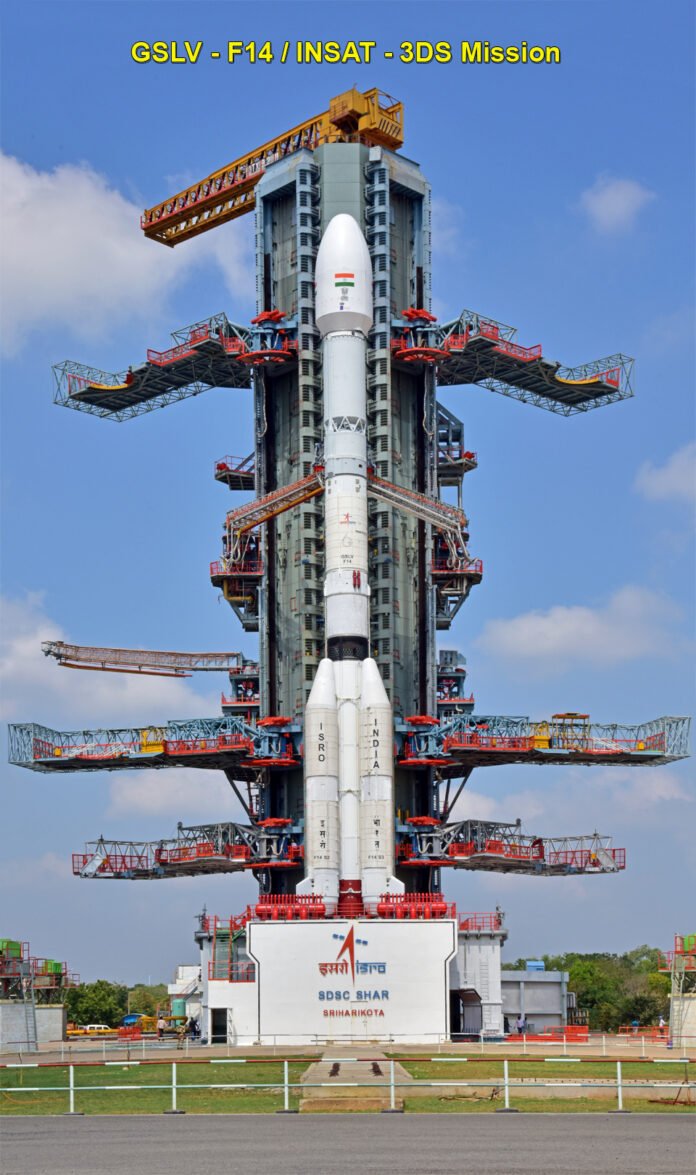ISRO INSAT-3DS Launch: Now it is going to be easier for India to detect the worsening weather patterns. Indian Space Research Organization (ISRO) is going to launch its weather satellite on Saturday (17 February). For this, the space agency is going to use such a rocket, which is known as ‘Naughty Boy’. This rocket is known as ‘Geosynchronous Launch Vehicle’ (GSLV).
Inshort-
When: The launch is scheduled for Saturday (February 17) at 5.35 pm
Where: The launch will take place at Satish Dhawan Space Center in Sriharikota, Andhra Pradesh
Rocket Name: The rocket is named “Naughty Boy.”
Purpose: The launch aims to Apart from the changing weather, this satellite present in space will also provide timely information about upcoming disasters.
Live Telecast: The launch can be watched live on ISRO’s official website.
Coverage Time: The live coverage starts 5.00 pm
ISRO’s Milestone: This launch marks a significant milestone for ISRO in space exploration.
Importance: The “Naughty Boy” rocket signifies India’s advancements in space technology.
Mission Updates: ISRO will provide live updates on the mission progress.
Impact: The launch is expected to impact future space missions positively.
ISRO’s metrological satellite INSAT-3DS will be launched through the GSLV rocket. Apart from the changing weather, this satellite present in space will also provide timely information about upcoming disasters. In such a situation, let us know the answer to every important question related to this new launch of ISRO.
- GSLV-F14 rocket will be launched on Saturday (February 17) at 5.35 pm from Satish Dhawan Space Center in Sriharikota, Andhra Pradesh. The launching can be seen on ISRO’s social media handles like YouTube and Facebook. Apart from this, the launching can also be seen on Doordarshan.
- According to ISRO, this is the 16th mission of the GSLV rocket and the 10th flight using the indigenous cryogenic engine. The GSLV rocket has got the name of ‘Naughty Boy’ because its failure rate is 40 percent. Out of 15 launches conducted with this rocket, 4 have failed.
- GSLV’s heavier brother, the Launch Vehicle Mark-III rocket, also known as the Baahubali rocket, has launched seven missions and all have been successful. The success rate of PSLV rocket is also 95 percent. Therefore, successful launching of GSLV rocket is very important.
- The success of this mission of the space agency is also very important for the GSLV rocket. The reason for this is that NISAR, a satellite that collects information about the Earth, will be launched this year through the GSLV rocket. American space agency NASA and ISRO are jointly preparing this satellite.
- GSLV, popularly known as ‘Naughty Boy’, is a three-stage rocket, whose height is 51.7 meters. Through this rocket a load of 420 tons can be sent into space. The rocket uses an Indian-made cryogenic engine and ISRO plans to retire it after a few more launches.
- ISRO’s INSAT-3DS satellite is being launched to provide information about weather conditions from space. The INSAT-3DS satellite will replace the already in-space INSAT-3D (launched in 2013) and INSAT-3DR (launched in September 2016).
- The weight of INSAT-3DS satellite is 2,274 kg and its mission life is 10 years. In simple language, this satellite will continue to provide accurate information about every change in the weather to ISRO for 10 years.
- Full funding has been received from the Ministry of Earth Sciences for the preparation of INSAT-3DS satellite. The total cost of preparing this satellite to be launched through ISRO is Rs 480 crore.
- After 18 minutes of launch through PSLV rocket, INSAT-3DS satellite will be installed in space at an altitude of 36,647 km x 170 km. This is the third version of the satellites launched earlier.
- INSAT-3DS satellite, once operational, will be able to provide advanced weather information both on land and sea. Through this, extreme weather events like storms will be detected. Apart from this, information about forest fire, snow cover, smoke and changing climate will also be available.
GSLV-F14/INSAT-3DS Mission:
The launch is now scheduled at 17:35 Hrs. IST.
It can be watched LIVE from 17:00 Hrs. IST on
Website https://isro.gov.in
Facebook https://facebook.com/ISRO/
YouTube https://youtube.com/watch?v=jynmNenneFk…
DD National TV Channel

